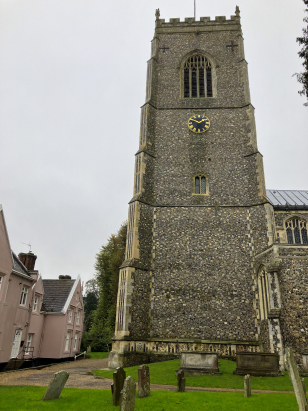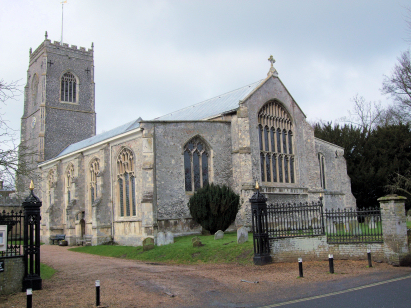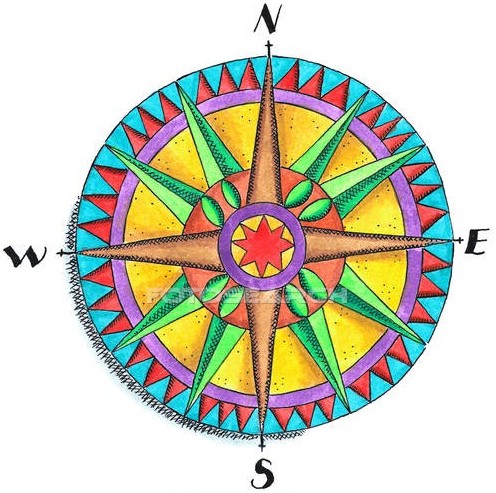
England
& Wales Hardwicke Marriage Index
Marriages
1754 - 1837
Framlingham St Michael
 |
England
& Wales Hardwicke Marriage Index |
The ParishThe parish of Framlingham lies in eastern Suffolk roughly 18 miles northeast of the county town of Ipswich. Framlingham sits a little over 2 miles southeast of the A1120 road (which in places traces an ancient Roman Road) which links Stowmarket through to the A12 (Ipswich to Lowestoft) road at Yoxford. Framlingham is a mid-sized market town spread along twin axis roads, the B1119, running west to east, and the B1116, from north to south. Each route has properties lining and gives the village a star-like structure. Framlingham has an ancient history, reputedly one of the strongholds of the Iceni tribe in Roman times, the most notable feature of its historic content is the town's motte-and-bailey castle. Originally built in 1101 by Roger Bigod, that castle only remains as earthworks as a the family fell into dispute with royalty and it was dismantled at royal instruction, A second castle, once favour was restored, was started in 1189 and completed c1213. The principal survival of that castle is its curtain-wall of 13 towers in a rough oval shape, a noted tourist attraction for the town. Framlingham's market lead to it becoming an important regional trading centre and coupled with Suffolk's traditional wool & cloth trade prosperity grew to the town's present size. In its rural Suffolk setting Framlingham has never had substantial industry, malting & brewing being the notable trades. Like most of Suffolk the wider parish would have been dominated almost totally today & at the time of this transcript by arable farming replacing the medieval sheep-runs that lead to the cloth trade. Modern developments have come and gone from the town, a branch railway line connected it into the wider Suffolk lines from 1859 but closed to passenger traffic in 1959 and totally since then. Framlingham is drained southeastwards by the infant River Ore which eventually joins with the Alde to make its way to the North Sea through the latter's estuary. Whilst the town's Ore bridges sit at 30 metres above the sea the town's western suburbs rise to a little above 50 metres in gently rolling countryside where local high points rarely rise a further 10 metres higher. Framlingham parish was probably the most extensive in eastern Suffolk, covering almost 4,700 acres it would have supported a population of around 2,500 parishioners. As one would expect of such an historic town Framlingham was amongst the largest 20% of settlements recorded in Domesday Book by population, having over 70 households even then. Four landholders shared the manor with Earl Hugh of Chester having the lion's share of the town's assets, these were extensive with an impressive 36 ploughs recorded alongside typical meadows & woodland dotted with innumerable livestock including 7 beehives making quite a buzz. |
 |
|
|

|
| Register No | Covering Dates | Deposited With | Register Style | Quality Standard | Comments |
| 1 |
17th April 1754 - 5th September 1791 |
Suffolk Record Office - Reference - FC101/D/3/10 |
Standard preprinted and self-numbered Marriage register
with 4 entries per page |
Grade 3 Register - there are sufficient quality issues
with this register to indicate that some misreads will occur
albeit few in number |
The beginning and end of this register suffer markedly from
fading with many entries barely legible, a few misreads are likely
as a consequence |
| 2 | 9th October 1791 - 29th December 1812 | Suffolk Record Office - Reference - FC101/D/3/11 | Standard preprinted and self-numbered combined Banns & Marriage register with 4 entries per page | Grade 4 Register - there are notable quality issues with this register which may have resulted in many misreads | Fading is extensive throughout this register, there may be quite a few misreads as a consequence. A shameful set of fiche for the archive to present to researchers |
| 3 | 3rd January 1813 - 16th May 1837 | Suffolk Record Office - Reference - FC101/D/3/12 | Standard Rose style preprinted and prenumbered Marriage register | Grade 4 Register - there are notable quality issues with this register which may have resulted in many misreads | Fading is extensive throughout this register which is provided on over-exposed microfiche making for a very difficult read at times, there may be quite a few misreads as a consequence. A shameful set of fiche for the archive to present to researchers |
|
Badingham
St John the Baptist
|
||
 |
Cransford
St Peter
Parham St Mary |
|
|
Kettleburgh
St Andrew
|
Parham
St Mary
|
1760 1770 1780 1790 1800 1810 1820 1830
Corrections to Tinstaafl Transcripts